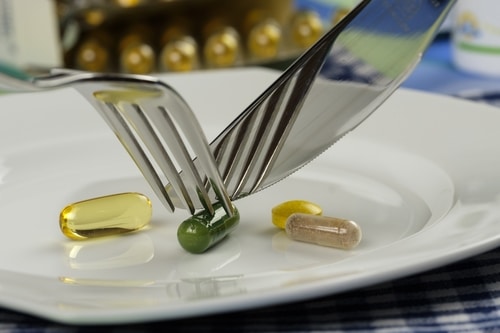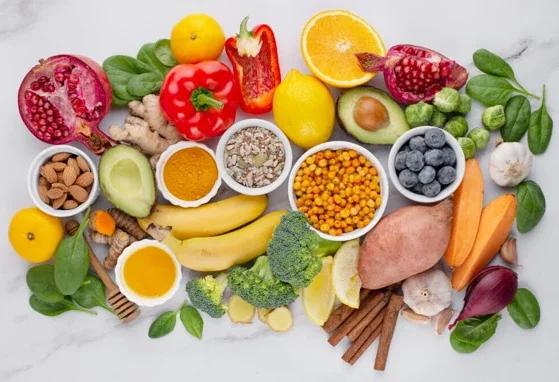When & how do supplements best support African populations?


Across Africa, it has been estimated that up to 45% of child mortality is due to undernutrition.1 Malnutrition is one of the main causes of death and disease on the continent, especially among vulnerable and socially disadvantaged people.1
One solution to these issues includes the use of supplements, with various initiatives aiming to boost micronutrient intake. Yet overuse or incorrect use of supplements can create their own health risks.2
For example, to address vitamin A deficiency, the World Health Organisation (WHO) recommends periodic high-dose supplementation to children 6–59 months of age in countries of highest risk.3 Yet, 2 studies in low- to middle-income countries (2013 and 2014) have shown no effect of high-dose vitamin A supplementation on mortality. 4 Further to this, there is no certain research evidence that 6-monthly doses of vitamin A causes a boost in serum retinol levels or reduction in subclinical vitamin A deficiency.4
This short-term intervention (administering vitamin A capsules) does not improve serum retinol levels but could create a dependency on capsules to address poor nutrition, which at its core, is rooted in poverty. Moreover, this type of intervention may even cause harm.4
This begs the question, when and how should dietary supplements be administered in the East and Southern Africa Region (ESAR)?
Single capsules vs. fortification supplementation
Micronutrient supplementation involves the delivery of single/multiple micronutrients in the form of capsules/tablets/drops/syrup.5 On the other hand, fortification is the process of adding micronutrients to commonly consumed foods or staple foods to increase their nutritional value.5
For any supplementation initiative to be maximally successful, it is essential to consider context. These include the cost-benefit, sustainability, monitoring and evaluation of strategies and, most importantly, population-specific factors such as the prevalence of deficiencies at a sub-national level and other currently running initiatives.5
Successful fortification programmes
Fortification programmes can boost micronutrient intake and general health and wellness, as is seen in the following case studies.
 Example 1: Improving vitamin A deficiency using biofortified orange sweet potatoes
Example 1: Improving vitamin A deficiency using biofortified orange sweet potatoes
In sub-Saharan Africa, over 40% of children (under the age of 5 years) suffer from vitamin A deficiency.6 One of several interventions aimed at addressing vitamin A deficiency is biofortification or the breeding of vitamin A into staple crops.6
High levels of beta-carotene are naturally found in many sweet potato varieties, making the breeding progress for biofortified orange sweet potato (OSP) much faster than for other vitamin A enhanced staples.6 Furthermore, the crop is ideally suited for the ESAR, since the crop thrives in tough environments.6
Example 2: The complementary food approach in Malawi
Undernutrition and diarrhoea prevalence in young Malawian children is high.7 Locally available dietary interventions may provide lasting solutions for the prevention and treatment of these issues.7 To date, research and interventions have focused on establishing adequate protein and energy intake, as well as marginal micronutrients (such as vitamin A).8
In a recent study, it was found that feeding young Malawian children a blend of soybean, soy hulls and maize was suitable for improving wellness. This blend reduced the children’s’ diarrhoea-type stools and increased the abundance of Akkermansia muciniphila, a bacterial species involved in maintaining intestinal health.7 In turn, this blend may provide a feasible means to improve the health of children in resource-poor settings via increasing microbiota composition variation.7
Example 3: Using food guide graphics in Uganda
For the last 30 years, malnutrition in Uganda has remained excessively high, despite improvements in food production and healthcare services.9 Rates of stunting (chronic undernutrition) and anaemia (proxy for micronutrient deficiency) are estimated at 29% and 53%, respectively, among young Ugandan children aged 6-59 months. 9
 The Infant and Young Child-feeding national counselling cards for community volunteers (IYCF cards)9 were developed by United Nations Children’s Fund (UNICEF) to improve nutrition education by teaching caregiver’s appropriate child-feeding practices.10
The Infant and Young Child-feeding national counselling cards for community volunteers (IYCF cards)9 were developed by United Nations Children’s Fund (UNICEF) to improve nutrition education by teaching caregiver’s appropriate child-feeding practices.10
Findings from a 2021 study demonstrated that such nutrition education can positively improve caregivers’ ability to make better food choices, providing their children with higher quality meals while increasing the number of snacks. 10
The importance of single-capsule micronutrient supplementation during crises
As much as the above-mentioned strategies work well in the ESAR region to boost vitamin A intake and general wellness, there are distinct periods when single-capsule micronutrient supplementation is a necessity. This is highlighted in the following case studies.
Example 1: Iron & folic acid supplementation in Ghanaian girls
 In countries with high burdens of anaemia, school-based iron and folic acid (IFA) supplementation is recommended for adolescent girls.11 As a global-scale crisis, iron-deficiency anaemia is a top cause of morbidity among adolescent girls of 10 – 19 years of age.12 Anaemia has various short-term consequences, such as reduced immunity13, aerobic capacity 14 and metabolism15, which can increase illnesses, lethargy, fatigue and lack of concentration.16
In countries with high burdens of anaemia, school-based iron and folic acid (IFA) supplementation is recommended for adolescent girls.11 As a global-scale crisis, iron-deficiency anaemia is a top cause of morbidity among adolescent girls of 10 – 19 years of age.12 Anaemia has various short-term consequences, such as reduced immunity13, aerobic capacity 14 and metabolism15, which can increase illnesses, lethargy, fatigue and lack of concentration.16
In the 2021 study, weekly IFA supplementation was shown effective in improving Haemoglobin (Hb) and reducing the prevalence of anaemia among Ghanian schoolgirls.11 This result was revealed even when most participants consumed fewer than the minimum effective number of IFA tablets.11
Example 2: Handling the measles outbreak in South Sudan
In Juba, 2019, the Ministry of Health for South Sudan, with support from the WHO, UNICEF, IOM and other partners launched various reactive measles campaigns to immunise children in affected locations and provide them with vitamin A supplementation.17
This was done with the aim of immunising all children against measles to reduce the rate of death. Yet, this is only made possible when maintaining population immunity at more than 95% over long periods, which can be done through routine immunisation and supplementary activities.18
Unexpected example: Improving Vitamin D status in Africa
In a 2020 study, the vitamin D status of 21 474 individuals living across 23 African countries was observed.19 Unexpectedly, roughly 18% of these individuals were discovered to have severe vitamin D deficiency.
This finding is in opposition to the view that the consistent sunshine in Africa was indicative of optimal vitamin D status of early humans, as Africa is the birthplace of humankind.20 In turn, this could be the ideal space to consider vitamin D supplements, until a more sustainable solution can be implemented.
 There is no hard & fast rule for supplements
There is no hard & fast rule for supplements
Unfortunately, there is no hard and fast rule when it comes to supplements. In times of crises, as seen in emergency/critical environments such as a measles outbreak, supplements can be considered a necessity. This methodology can also be useful in environments that were previously believed to have sufficient nutrient intake, as shown in the case of severe vitamin D deficiency in Africa. Yet, fortification programmes are also useful in improving micronutrient intake and general health.
Considering the high prevalence of multiple deficiencies among children in the ESAR, it is likely that several of these strategies could and should be used concurrently, in a balanced manner.5 However, before implementing any programme, a careful diagnostic assessment should be completed to understand which strategies will be most beneficial for a specific population and region,5 while ensuring that no harm is caused with possible excessive consumptions.
Furthermore, positive findings derived from meta-analyses should support and raise efforts in countries to reach more children with the correct interventions.5
References:
- WHO | Regional Office for Africa. 2021. Nutrition. [online] Available at: <https://www.afro.who.int/health-topics/nutrition> [Accessed 9 September 2021].
- Farrell, S., 2015. Harmful effects of supplements can send you to the emergency department - Harvard Health. [online] Harvard Health. Available at: <https://www.health.harvard.edu/blog/harmful-effects-of-supplements-can-send-you-to-the-emergency-department-201510158434> [Accessed 13 September 2021].
- Tanumihardjo, S., Kaliwile, C., Boy, E., Dhansay, M. and van Stuijvenberg, M., 2018. Overlapping vitamin A interventions in the United States, Guatemala, Zambia, and South Africa: case studies. Annals of the New York Academy of Sciences, 1446(1), pp.102-116.
- Coutsoudis, A., Sanders, D., Dhansay, M., Van Stuijvenberg, M. and Benn, C., 2019. Is it time for South Africa to end the routine high-dose vitamin A supplementation programme?. South African Medical Journal, 109(12), p.907.
- Tam, E., Keats, E., Rind, F., Das, J. and Bhutta, Z., 2020. Micronutrient Supplementation and Fortification Interventions on Health and Development Outcomes among Children Under-Five in Low- and Middle-Income Countries: A Systematic Review and Meta-Analysis. Nutrients, 12(2), p.289.
- Low, J., Ball, A., Magezi, S., Njoku, J., Mwanga, R., Andrade, M., Tomlins, K., Dove, R. and van Mourik, T., 2017. Sweet potato development and delivery in sub-Saharan Africa. African Journal of Food, Agriculture, Nutrition and Development, 17(02), pp.11955-11972.
- Lungu, E., Auger, J., Piano, A. and Dahl, W., 2021. Higher fiber complementary food alters Fecal microbiota composition and normalizes stool form in Malawian children: A randomized trial. African Journal of Food, Agriculture, Nutrition and Development, 21(04), pp.17854-17875.
- Samba, C., Gourmel, B., Houze, P. and Malvy, D., 2010. Assessment of Vitamin A Status of Preschool Children in a Sub-Saharan African Setting: Comparative Advantage of Modified Relative-dose Response Test. Journal of Health, Population and Nutrition, 28(5), pp.484-493.
- Motherchildnutrition.org. 2021. Healthy Nutrition - Mother, Infant and Young Child Nutrition & Malnutrition - Feeding practices including micronutrient deficiencies prevention, control of wasting, stunting and underweight. [online] Available at: <https://motherchildnutrition.org/healthy-nutrition/> [Accessed 16 September 2021].
- Kansiime, E., Kabahenda, M. and Bonsi, E., 2021. Improving caregivers’ infant and young child-feeding practices using a three-group food guide: A randomized intervention study in central Uganda. African Journal of Food, Agriculture, Nutrition and Development, 21(04), pp.17834-17853.
- Gosdin, L., Sharma, A., Tripp, K., Amoaful, E., Mahama, A., Selenje, L., Jefferds, M., Martorell, R., Ramakrishnan, U. and Addo, O., 2021. A School-Based Weekly Iron and Folic Acid Supplementation Program Effectively Reduces Anemia in a Prospective Cohort of Ghanaian Adolescent Girls. The Journal of Nutrition, 151(6), pp.1646-1655.
- WHO. 2021. Global accelerated action for the health of adolescents (AA-HA!): guidance to support country implementation: summary. [online] Available at: <https://www.who.int/publications-detail-redirect/WHO-FWC-MCA-17.05> [Accessed 13 September 2021].
- Hassan, T., Badr, M., Karam, N., Zkaria, M., El Saadany, H., Abdel Rahman, D., Shahbah, D., Al Morshedy, S., Fathy, M., Esh, A. and Selim, A., 2016. Impact of iron deficiency anemia on the function of the immune system in children. Medicine, 95(47), p.e5395.
- Beard, J., Dawson, H. and Piñero, D., 2009. Iron Metabolism: A Comprehensive Review. Nutrition Reviews, 54(10), pp.295-317.
- Beard, J., 2000. Iron Requirements in Adolescent Females. The Journal of Nutrition, 130(2), pp.440S-442S.
- Balarajan, Y., Ramakrishnan, U., Özaltin, E., Shankar, A. and Subramanian, S., 2011. Anaemia in low-income and middle-income countries. The Lancet, 378(9809), pp.2123-2135.
- WHO | Regional Office for Africa. 2019. South Sudan intensifies efforts to control an ongoing measles outbreak. [online] Available at: <https://www.afro.who.int/news/south-sudan-intensifies-efforts-control-ongoing-measles-outbreak> [Accessed 13 September 2021].
- WHO | Regional Office for Africa. 2020. South Sudan vaccinates over 690 000 children against measles in 25 counties. [online] Available at: <https://www.afro.who.int/news/south-sudan-vaccinates-over-690-000-children-against-measles-25-counties> [Accessed 13 September 2021].
- Mogire, R., Mutua, A., Kimita, W., Kamau, A., Bejon, P., Pettifor, J., Adeyemo, A., Williams, T. and Atkinson, S., 2020. Prevalence of vitamin D deficiency in Africa: a systematic review and meta-analysis. The Lancet Global Health, 8(1), pp.e134-e142.
- Luxwolda, M., Kuipers, R., Kema, I., van der Veer, E., Dijck-Brouwer, D. and Muskiet, F., 2012. Vitamin D status indicators in indigenous populations in East Africa. European Journal of Nutrition, 52(3), pp.1115-1125.
If you liked this post you may also like




